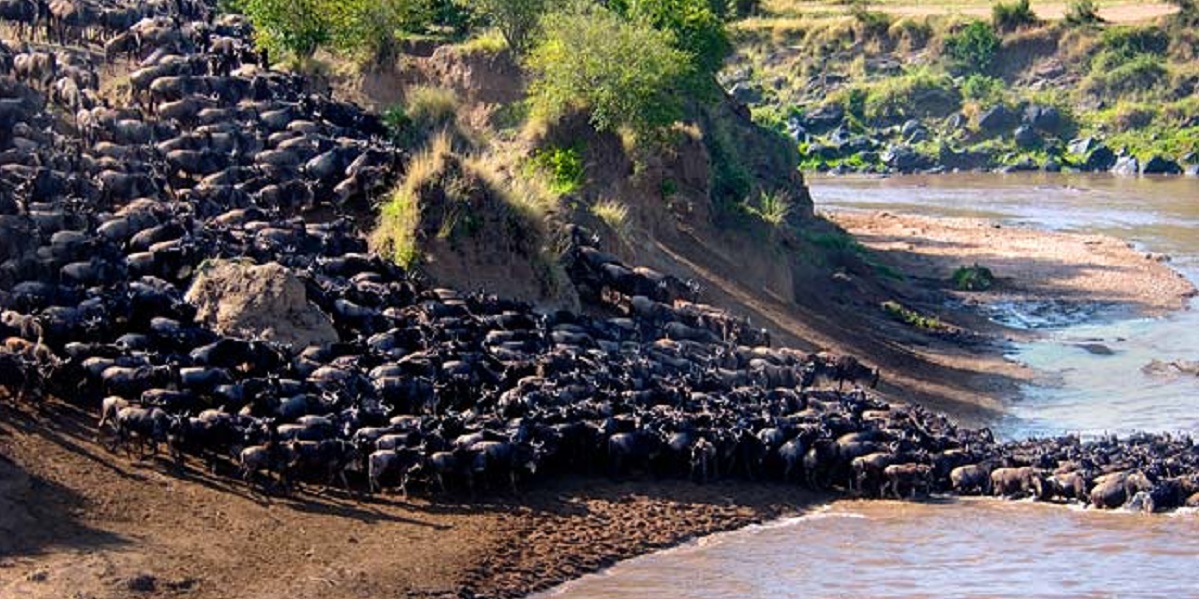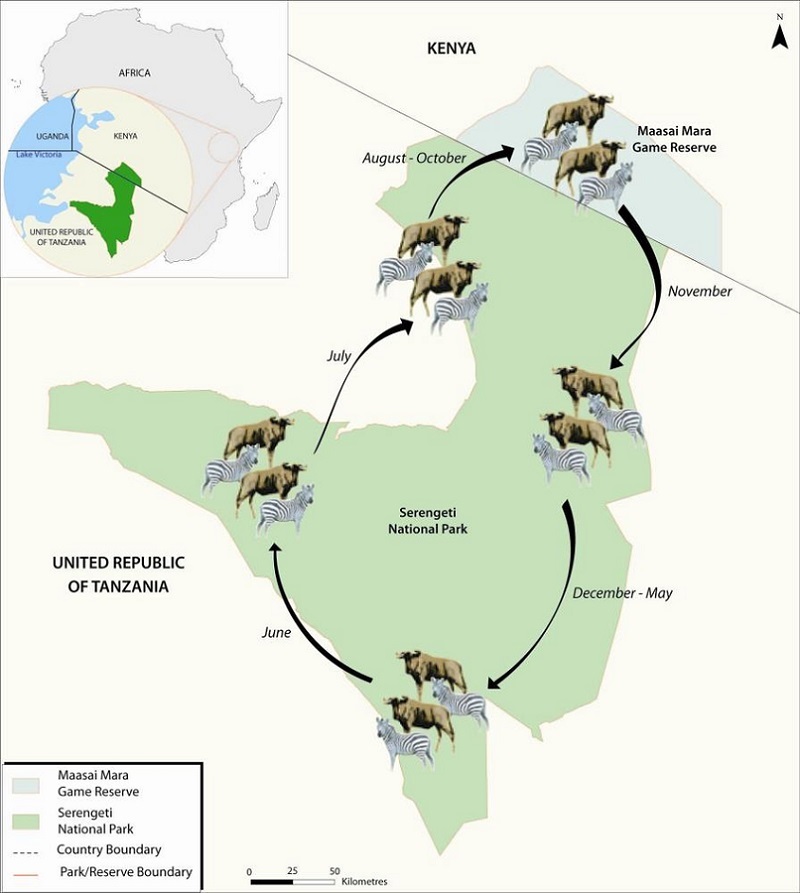
Witnessing the Great Serengeti Migration on the Serengeti plains is one of the great experiences one can have on their East African adventure. The great migration is the movement of vast numbers of the Serengeti’s wildebeest, accompanied by large numbers of zebra, and smaller numbers of Grant’s gazelle, Thomson’s gazelle, eland and impala. These large herds of animals move in an annual predictable pattern seeking fresh grazing and better quality of water. The precise timing of the annual migration although generally known, is entirely dependent upon the rainfall patterns of each year.

The migration pattern over a one year period goes like this:
In January, the herds are at the southern plains of the Serengeti. In January and February, the wildebeest give birth to their young on these southern plains. The entire wildebeest herd produces around 500,000 calves within a very brief period of two to three weeks. While lion and hyena are common on these southern plains, the calves are too many for the predators to prey on in their entirety. Furthermore, wildebeest calves are incredibly resilient. The calves will stand after two to three minutes of their birth and be off running with the herd at just five minutes old.
In March and April, the wildebeest herd moves north and west, to the central and western reaches of the Serengeti, near Lake Victoria. During the long rains of April, the wildebeest mate after complex territorial rituals by males.
In June and July, the great crossing of the Serengeti happens in earnest. Wildebeest cross over the Grumeti River and eventually the Mara River to reach Kenya.
In August and September, the central Serengeti dry up and the entirety of the herd arrive in Maasai Mara National Reserve and the northernmost reaches of the Serengeti, past the Mara River. In October and November, the low rains begin and vegetation starts returning to the flood plain in the south. The herd starts to move back south, along the eastern fringes, only to settle in the south for birthing and the long rains of spring.
It is believed that some 250,000 wilderbeest die during the journey from the Serengeti in Tanzania to Maasai Mara Reserve in lower Kenya, a total of 800 km (500 miles). Death is usually from thirst, hunger, exhaustion or predation.
